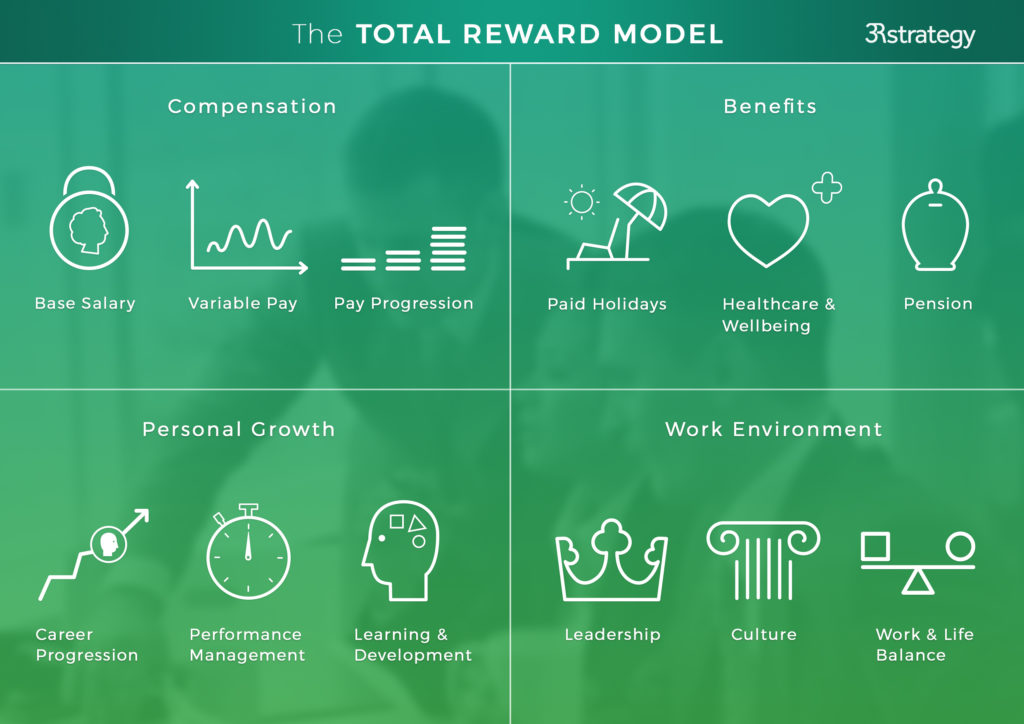
We are often asked, “what is a reward strategy?”. It covers a wide range of areas.
It involves designing and implementing reward policies and practices that support your organisation’s objectives, resulting in a motivated and effective workforce.
An organisation’s pay and reward structure has often evolved without any overall goal, sometimes allowing bias and unequal pay risks to creep in. However, applying a strategy to your pay and reward efforts can deliver real benefits to your workforce and your business. In the same way that our organisational values define our culture, our reward principles define our approach to pay and reward. And enable us to communicate this clearly to employees.
Implementing this is something the CIPD recommends to employers.
Why Does My Organisation Need a Reward Strategy?
We all want to work in an environment where we feel we are truly making a difference, one that encourages us and makes us feel appreciated.
We also want to work with a leader who takes the time to develop and inspire us – recognising our efforts.
The right reward strategies can help you achieve this for your employees, using benefits, bonuses and pay to encourage employee loyalty. Motivated staff will go the extra mile to contribute towards organisational success and better results. A thriving environment will inevitably attract new talent, give existing employees a sense of belonging, and help retain your key people.
Extensive research shows that having a defined reward strategy helps organisations attain better financial results than those that choose not to.
What Should a We Consider?
A good reward approach will consider more than just pay, so it is important to go further than scouring the local press to find out what the market is paying.
Organisations can get just as much, if not more, out of non-financial rewards as from financial ones.
A total reward approach looks at what your organisation is trying to achieve, what your people want, what is affordable, and the structures needed to achieve this.
We base our approach on the four pillars of workplace fulfilment, which cover the following areas:
- Pay
Every organisation must pay its employees for the services that they provide (time, effort and skills). This includes both fixed (salary and allowances) and variable (bonus and incentives) pay. The cash compensation provided to employees increases over time and can be linked to a number of different factors, such as performance or career development.
- Benefits
Organisations use benefits to supplement the cash compensation they provide to employees. These vary depending on the size of the organisation and affordability but can provide security and comfort to the employees and their families. The benefits include holidays, medical cover, income protection and pension schemes.
- Personal Growth
Providing personal and professional growth opportunities to employees is an essential part of any reward strategy. These can be skills acquired on the job as well as formal training programmes valued by the employees that also serve the organisation’s strategic needs. Alongside this development, however, is the need to manage expectations, assess performance and constantly strive to improve.
- Positive Workplace
A positive work environment can often be the defining factor in retaining key talent in an increasingly competitive market. Ultimately, we all want to work in an environment where there is a genuine feeling of team spirit and togetherness, with a leader that inspires and supports us to achieve success both at work and at home.
How Do You Develop A Reward Strategy?
We’ve put together a 6-step process to guide you through the process of planning and implementation.
How To Develop A Reward Strategy
Related Reading

